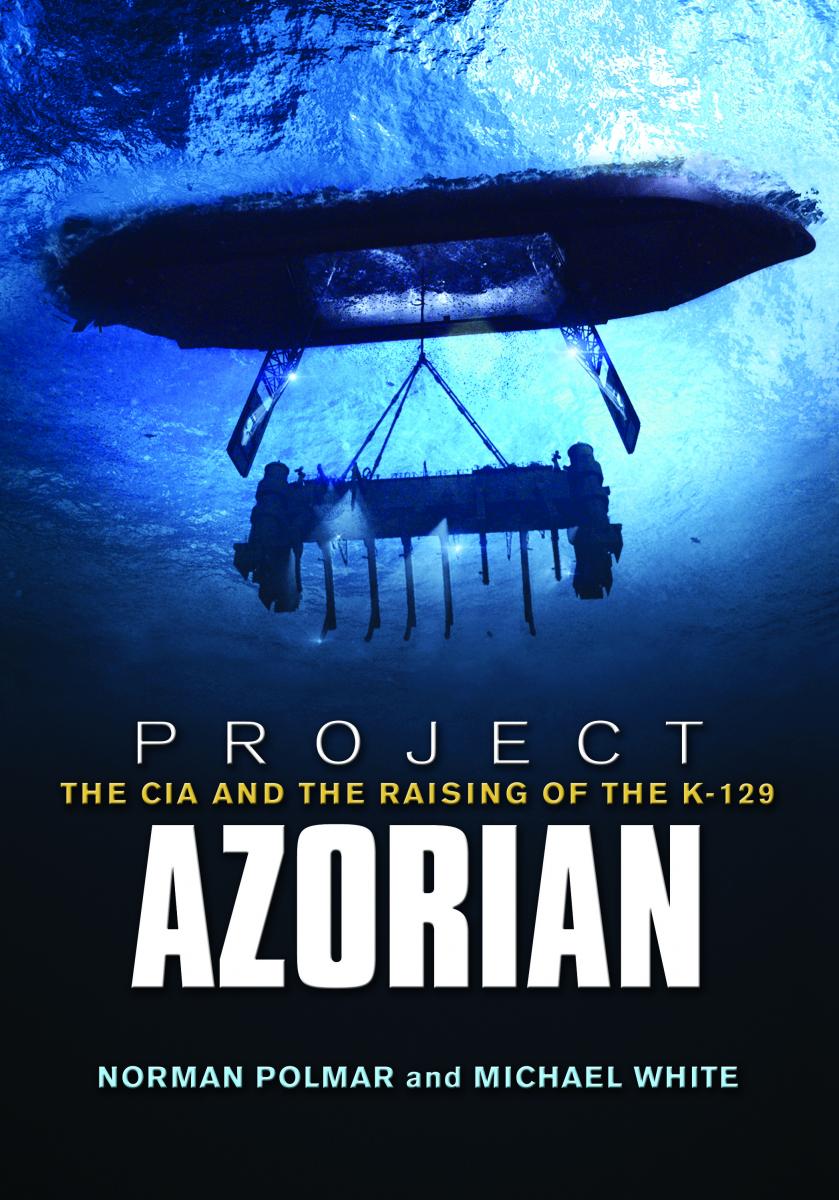PROJECT AZORIAN—The CIA and the Raising of the K-129
By Norman Polmar and Michael White
Naval Institute Press, 2010 ISBN/SKU: 9781591146902. $29.95 US list price.
The book Project Azorian describes the Nixon Administration’s attempted salvage of the Soviet Golf-II submarine in 1974, based on CIA records. It is a quick read, about 180 pages less illustrations. Interesting items include:
• Very good illustrations and diagrams provide much technical information.
• The submarine was lost when two of its liquid-fuel missiles ignited inside their launch tubes and fractured the submarine.
• The salvage project focused on recovering the third missile in its tube, which was the forward-most of three, along with the bow section forward of it;
• The Soviet embassy in Washington received an anonymous revelation of the operation but no known reaction resulted.
• According to the ComSubPac plans officer at the time, should USSR ships seize the recovery ship Hughes Glomar Explorer, USS Tautog (SSN 639) and another submarine carried WW2 anti-ship torpedoes specifically to sink her, a contingency not told to the crew of the recovery ship.
• A supposed attempt to dig further under the Soviet submarine strained the huge recovery mechanism, nicknamed Clementine, and resulted in the loss of most of the salvaged section during the ensuing hoist.
The authors of Project Azorian say little about what actually was learned but somewhat wishfully ask the reader to regard the operation as successful. Project Azorian challenges particular statements in other books and newspaper articles but is silent about contradictory analyses that have previously appeared:
• The book Blind Man's Bluff—The Untold Story of American Submarine Espionage by Sherry Sontag and Christopher Drew (2000) stated that USN personnel suggested use of submarines and vehicles to break open the hull to salvage the contents, instead of waiting six years for the huge grappling device that fractured. Blind Man’s Bluff is a cited reference in Project Azorian.
• A past television program, not the upcoming program associated with the book Project Azorian, quoted one participant that when the submarine section lifted free from the sea bed, the resulting sudden increase in buoyed mass caused Hughes Glomar Explorer naturally to settle deeper in the water. The suspended submarine and the grappling mechanism crashed back on the sea bed. According to the program, that impact was the cause of the structural damage to the mechanism.
• Blind Man’s Bluff contends that the hull structure, which was the primary item that the CIA’s mission could obtain over the Navy’s proposed alternative, had little value for intelligence purposes.
• The National Security Archive at The George Washington University posted on February 12, 2010, the web page “Project Azorian—The CIA's Declassified History of the Glomar Explorer” (http://www.gwu.edu/~nsarchiv/nukevault/ebb305/index.htm). A director with the National Security Archive commented there that the operation “resembles the Bay of Pigs more than U-2 or Corona.”
Items that this reviewer adds:
• The acceptance of the six-year duration for this operation, against the alternative faster USN proposal, suggests that recovery of Soviet crypto gear and publications, offered as one justification for the huge project, had no urgency. The risk of disclosure was high and occurred during the six-year duration.
• The above TV program did not mention that the dynamic change in buoyancy is known in salvage, which suggests that the interviewed participant did not know of it, which in turn suggests that actual salvage expertise was missing from conception to the end.
• In terms of project management, and also in terms of a military commander’s estimate of the situation, the planning phase for this operation should have recognized that multiple risks of the chosen method were very high and were of a nature that no increase in time and resources could recover.
Project Azorian contains source notes, an index, and as mentioned, very good illustrations. This is the first public access to relevant newly-declassified documents and to the authors’ interviews of former Soviet personnel. Project Azorian is inexpensive and easy to read and adds significant authoritative information, including many dramatic details, to Blind Man's Bluff. While a comprehensive analysis of this operation has yet to appear, Project Azorian adds greatly to available information.
(MP)
